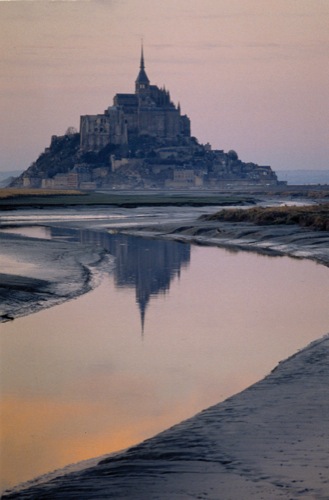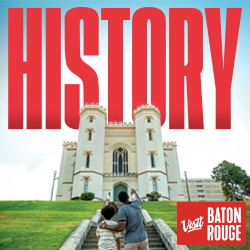It would be hard to find a region with as many intriguing contrasts as Normandy in northern France.
The medieval town of Bayeux has a tapestry depicting an epic battle that changed the course of two nations, and in Giverny, a floral tapestry is the result of one man’s quest for peace and serenity. There are shrines to St. Michael, a lieutenant in the army of God against the devil, and to St. Joan, a lieutenant in the army of France against the English. The same beaches that were painted in a pastel haze by the impressionists were painted deep red by the blood of the Allies in World War II.
Seaside Deauville
Normandy offers the traveler so much that the only problem is where to begin. One suggestion is Deauville, a lovely seaside town with a passion for horses and the high life. Known as the Equestrian Capital of France, Deauville boasts two race courses, an equestrian center, a prestigious Thoroughbred auction house and a renowned Polo Cup. In 2014, it will host the World Equestrian Games, which were last held in 2010 in Lexington, Kentucky, Deauville’s sister city.
Equestrian culture is only part of Deauville’s charm. Known as the Queen of the Cote Fleurie, or Flowery Coast, Deauville began as a posh resort that dates back to the 1860s when the Duc de Morny, notorious boulevardier and half brother of Napoleon III, gave it his imprimatur.
He built a string of impressive Belle Epoque villas, one of which, Villa Strassburger, is open to the public. The magnificent mansion, once home to Baron Henri de Rothschild, is now used by the mayor for official entertaining.
A stately stroll on Deauville’s seaside boardwalk, the Promenade des Planches, is a must, as is a visit to the elegant casino. Even if you don’t gamble, check out the theater, inspired by the opera house at Versailles.
If you’re an early riser, you can combine a beach walk with watching the Thoroughbreds on their morning workouts, hoofs pounding the sand and salty spray glistening on their coats.
Finally, if Burgundy and Bordeaux have their wines, Normandy counters with calvados, an apple brandy with a distilling tradition dating back to Norman times. On the outskirts of Deauville, in a park filled with centuries-old trees, the Chateau du Breuil and its distillery welcome groups.
Caen and Colleville-sur-Mer
The city of Caen dates back 1,000 years. It was founded by William, Duke of Normandy, who went on to become king of England after routing Saxon king Harold at the Battle of Hastings in 1066.
You can trace William’s footsteps at the impressive Abbay aux Hommes, or Men’s Abbey, and its counterpart, Abbaye aux Dames, or Ladies’ Abbey, founded by his queen, Matilda, and at the Ducal Castle. Built by William as both residence and fortification, the castle remains one of the largest enclosures in Europe.
Many find the city’s most impressive offering to be the Caen Memorial. It’s divided into two sections, each occupying its own building: the world before 1945, meaning events leading up to and including World War II, and the world after 1945, from the end of the war to the fall of the Berlin Wall.
You will need a full day to do justice to both. The multimedia exhibitions are heartrending and heartwarming. Regardless of whether you are a military buff, this is one memorial you won’t want to miss.
From Caen, it’s an easy journey, in distance if not in spirit, to the American cemetery at Colleville-sur-Mer, covering 173 acres on the bluffs above Omaha Beach. There, 9,387 stark white crosses and Stars of David mark the graves of Americans who died to liberate Normandy from the Germans.
At nearby Utah Beach, the Museum of the Landing was built in 1962 on the exact spot where the second wave of American soldiers came ashore June 6, 1944.











